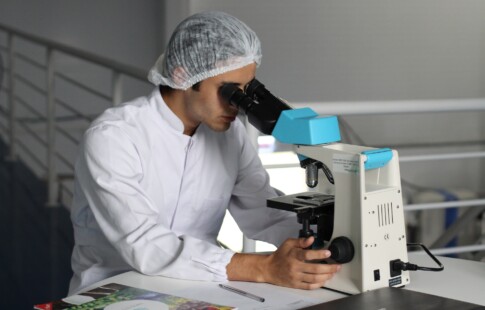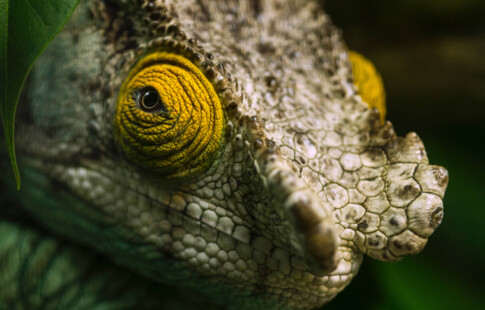
The Pros and Cons of Animal Testing
We are reader-supported. When you buy through links on our site, we may earn affiliate commission.
Animal testing is a hot topic in the food, medicine, and cosmetics industries. The conversation seeps into other sectors, like fashion and cleaning products. It is commonly agreed that harming creatures isn’t aligned with environmentalist ideals, but are there pros and cons to animal testing?
To uncover the truth behind the argument, you must understand the logistics behind executing an animal test — whether for medicine or fashion — and the technology these experts have available to them. Explore the subject’s nuances and if there are any ways to justify the practice.
What Is Animal Testing?
Animal testing encompasses any test, whether chemical, medical, or anything in between, that is performed on animals instead of humans. It is for research purposes, usually during product development, such as formulating a new medication or testing the irritants of a perfume.
The food industry may give test products to animals sprayed with new pesticides to see how they impact animals biologically similar to humans. The possibilities are comprehensive and versatile, but does that make them ethical?
Most animal testing occurs in containment in laboratory settings. Animal testers must abide by specific regulations. In the United States, the Department of Agriculture governs them. They work alongside the Animal and Plant Health Inspection Service for enforcement. However, the primary law they look to is the Animal Welfare Act, passed in 1966. It encompasses everything from testing methods and transport. These are some of the basic tenants animal testers must follow:
- Refer to an animal care board
- Have veterinary programs
- Ensure qualifications of those practicing on animals
- Have adequate safety and reporting tools for animal welfare
Do these guidelines make animal testing a viable option? Not necessarily. The act does not cover rats, mice, and birds — most animals used in animal testing. Let’s dive into the pros and cons of animal testing, starting with some arguable pros.
The Pros
These are the most prominent arguments those in favor of animal testing make, despite potential evidence for the contrary.
It Saves Human Lives With Medical Advancement
Numerous vaccines and medications throughout human history became what they are today from animal testing. Everything from cholera to polio had animals leading the charge to save millions of human lives. It is not just vaccines and medications — they also advanced surgical procedures, like organ transplants and other body part replacements. Biomedical research would not be the same without it.
Animals Also Benefit from Research
Medical advancements happen to more than just humans. Animal testing can improve the health and livelihoods of animals, extending their life span. For numerous diseases and ailments that impact both humans and animals, researchers can manipulate discoveries to help all parties involved.
The Cons
The saturation of animal rights and environmentalist education is revealing the catastrophic cons of animal testing. Do any of them outweigh the potential pros?
There Are Plenty of Alternatives to Animal Testing
The technology humans have nowadays has rendered live animal testing obsolete. First, medical researchers can run paid testing scenarios with humans or ask for willing volunteers. Humans can provide consent that animals cannot, allowing them to continue living in their habitats unharmed for the benefit of humans.
Additionally, doctors can test product reactions using in vitro methods, analyzing how small pieces of tissue and even human cells react without needing a wholly live participant. The results would appear with relative accuracy — especially when animal testing has debatable accuracy and replication abilities.
There is also software now that leverages AI, machine learning, modeling, and related resources to execute scenarios and determinations well with near-infinite data. The knowledge of ingredients with details on human and animal biology requires no live participants — saving labs countless money and hours in wasted experimentation.
Humans and Animals Are Not the Same, Causing Waste
Despite how the media portrays animal subjects as biologically similar, that is not the only similarity required for in-lab tests to translate to human subjects. The National Institute of Health revealed that 95% of novel drugs that went through animal testing fail application to humans. For example, medication tests for ailments such as Alzheimer’s and sepsis have a near 100% failure rate.
The percentage reveals how much time and research funds are wasted on experiments that do not yield results. The amount of waste in products, resources, energy, labor, and animals is toxic for the environment and an objectively poor business model.
Encourages Animal Cruelty in Captivity
It is the most significant and powerful argument in the conversation. Despite rules and regulations, it is impossible to make animal testing objectively humane. Even if the lab and housing conditions when away from testing are comfortable, it does not excuse the potential pain and suffering countless animals have endured to benefit humans. It includes but is not limited to, being exposed to toxic substances or being force-fed.
Over 110 million animals die in the United States alone yearly from animal testing, and this does not include other nations in the world that have mandatory animal testing for most products, including makeup.
This is especially true for non-essential products, like cosmetics. For example, testing makeup on animal fur could cause topical irritation or burning, irreparably damaging the coats that keep them safe and warm. It is why the Leaping Bunny symbol came into existence, only branding cosmetics with its signature if the company proves it is cruelty-free and does not engage in animal testing.
Animal Testing Pros and Cons for a Healthier Environment
The animal testing conversation is heated, but when looking at the big picture, it is possible to eliminate it for biodiversity and animal welfare — primarily for non-essential, non-medical purposes. Research and development in related industries will need adjustments, but harming animals like this is questionably effective when compared to how it will affect humans.
To help the planet thrive, humans should seek alternative ways to formulate products, including medicine. Exploring technology is the best way to keep animals safe and healthy while empowering humans toward medical advancement and safe and refined consumer products.
Share on
Like what you read? Join other Environment.co readers!
Get the latest updates on our planet by subscribing to the Environment.co newsletter!
About the author
Jane Marsh
Starting from an early age, Jane Marsh loved all animals and became a budding environmentalist. Now, Jane works as the Editor-in-Chief of Environment.co where she covers topics related to climate policy, renewable energy, the food industry, and more.





